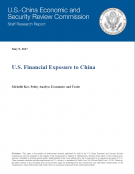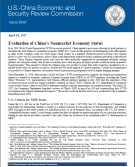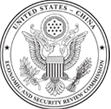×
Filter Results
Filter Results

Research
USCC Staff have compiled a table of World Trade Organization (WTO) cases brought by the United States against China from data provided by the WTO.

Research
USCC Staff have compiled a table of World Trade Organization (WTO) cases brought by China against the United States from data provided by the WTO.



Research
The U.S.-China Economic and Security Review Commission invites submission of proposals to provide a one-time unclassified report on supply chain vulnerabilities from China in U.S. federal information technology (IT) procurement. Electronic or hard-copy proposals must be received by 5:30PM (EST) on June 14, 2017.

Staff Paper
China’s direct financial linkages with the United States have been growing but remain very modest when compared to the two countries’ trade linkages. Beijing has taken steps to gradually open its financial sector to foreign investors, but U.S. investors have displayed little interest since the reforms are happening as Chinese policymakers impose tighter restrictions on foreign currency conversions and outbound capital flows. Economic and financial developments in China can affect U.S. financial markets more substantially through indirect channels, as was evident in the reaction of U.S. equities to China’s stock market crashes in 2015 and 2016. More broadly, the impact of China’s slowing growth and economic reforms on trade, commodities demand, and investor confidence affects global financial markets, which in turn influence U.S. financial markets.

China Bulletin
Presidents Trump and Xi agree to reform a flagship bilateral dialogue

Research
The U.S.-China Economic and Security Review Commission invites submission of proposals to provide a one-time unclassified report on China’s development of advanced weapons. Electronic or hard-copy proposals must be received by 5:30PM (EST) on May 30, 2017.

Issue Brief
This two page issue brief lays out the U.S. statutory test for determining whether a country is a market economy, and assesses China’s eligibility based on those criteria.

